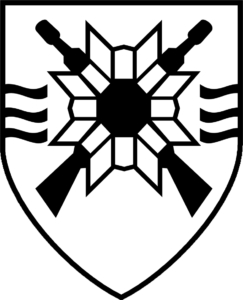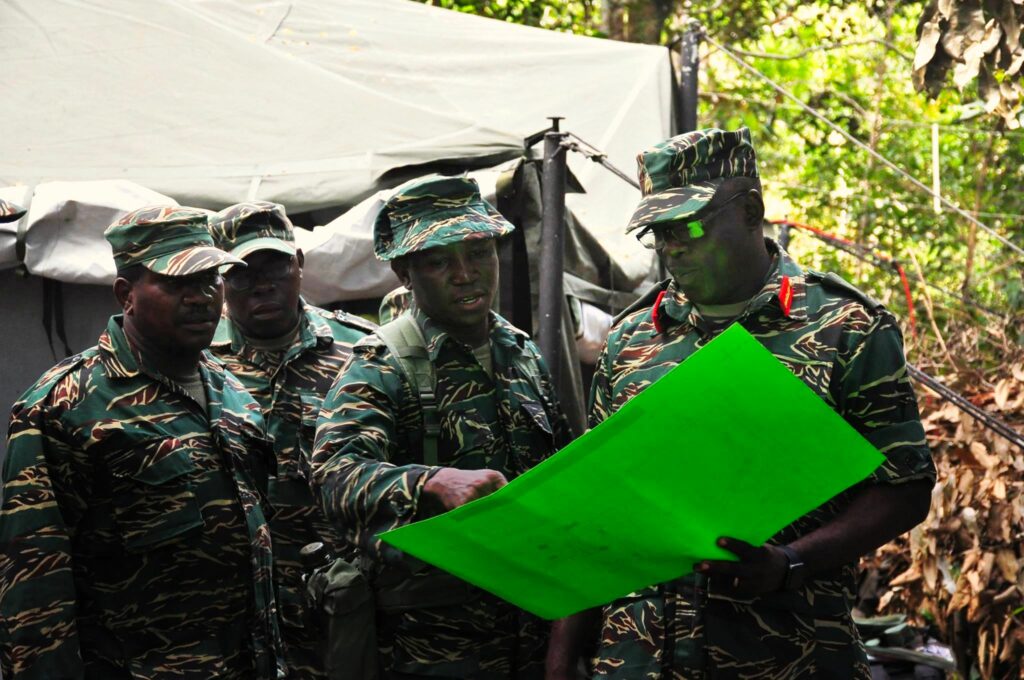
About Intelligence Corps (G2)

The Guyana Defence Force (GDF) was established on the 1st November, 1965. Prior to the establishment Guyana’s Defence was in the hands of the then British Guiana Volunteer Force (BGVF). The G2 Branch was inherited from the BGVF and was then called Intelligence Centre (Int Centre), which was commanded by a Commanding Officer (CO). During the early 1980’s when the establishment of the GDF was revised the name changed to Intelligence Command, which was also commanded by a Commanding Officer. After a second review in 1990, the name changed to it current name, the G2 Branch, which was and is currently commanded by a Staff Officer 1 General 2.
Since the establishment of the GDF the role of the G2 Branch remained constant that is:
To provide intelligence and security advice to the Chief of Staff and Units of the Force.
The intelligence organization was divided into four (4) main divisions:
- Military Police Corps.
- Analysis and Production.
- Training and Education.
- Unit Operations.
It provided staff for operations rooms at Unit and Force levels and all other trained intelligence personnel throughout the Force down to Company level.
THE MILITARY POLICE CORPS
To maintain discipline by the prevention and detection of crime and apprehension of offenders.
To assist in administration and security duties by undertaking fire prevention, traffic control and compound guard duties.
ORGANISATION: This Corps had a ‘Dog Wing’ for compound guard and security dogs to assist in security work. This Corps had elements in the main GDF bases and interior locations. As the security division of the Intelligence Corps it was directly controlled by the Force Intelligent Officer and managed a small detention centre for military offenders
The following Officers served as Commanding Officers of the Intelligence Corps/G2 Branch in the order.
- Retd. Col G Mc Pherson.
- Retd Brig D Granger -1978 – 1979.
- Retd Col G Mc Pherson.
- Retd Lt Col JF Harmon.
- Retd Capt Osborne.
- Ex Capt L Carroll.
- Brig EO Collins .
- Retd Lt Comd A Edwards.
- Col M Phillips.
- W/Lt Col W Algernon .
- Lt Col J Williams .
- Lt Col G Lewis.
- Lt Col SC James.
During the early years the Unit was mandated to conduct all operations room courses and security and intelligence courses. These were done at the grades 111 and 11 levels. This training was incorporated with practical exercises on the playfield BC(A) in tents. The names of those exercises were “Ex Agoute” and “Ex Running Dog”. As part of the training, operatives were exercised in the gathering of intelligence through surveillances and the monitoring of activities. The compilation of village reports was also part of the training then.
During the deployment of any military contingent a representative from Int Corps usually accompanied the troops. In those days the representatives were referred to as the “Acorn Rep” or the “India 3Rep”. These were signal address group and call sign used then. “Acorn Reps” and India 3 Reps were deployed on all border locations; they accompanied the GDF front line string band to Nicaragua and Cuba on tour in 1987.
During the early days of its establishment Int Corps was seen as the elite arm of the GDF and special emphasis were paid to the selection of ranks to this Unit. Undesired persons were never transfer from this Unit, but they were struck off strength (SOS). Officers were never rotated, when Officers and ranks were posted to this Unit, they served until they retired or resigned from the organisation. See Annex B for a list of some of the persons who served in this Unit.
The Intelligence Corps HQ was located in the admin building western end on the ground floor. During the 1980’s two (2) building were allotted to the Corps in Eteringbang street BC(A). Combat Intelligence, Internal Security Intelligence, Strategic Intelligence and personnel section were housed in the allotted buildings while the H/Q remained in the admin building.



